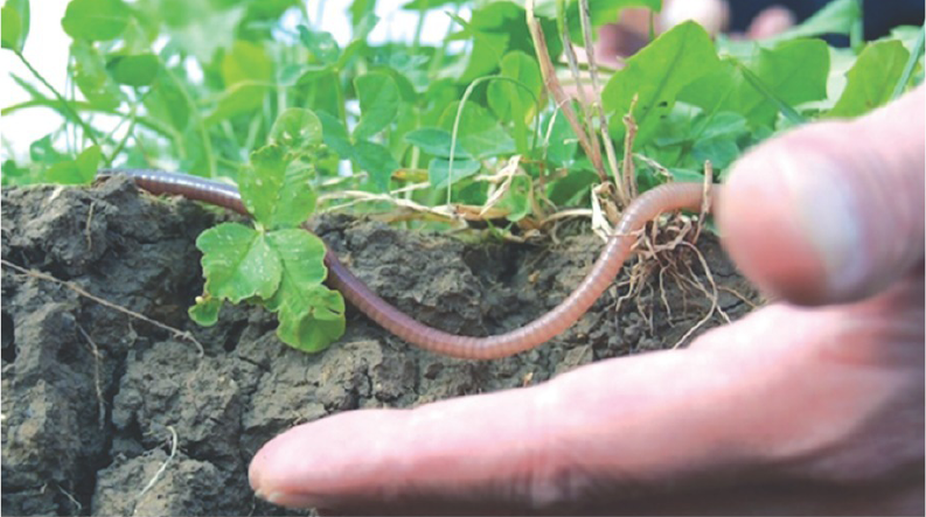On the one hand there is increasing realisation that both from the point of view of food safety as well as saving the natural fertility of soil, it is important to spread organic farming.
On the other hand, it is also becoming apparent that the progress of organic farming has been slow and it is far from becoming a mass movement.
Why is this so? One important reason is that organic farming has not been corelated properly to the needs of our country and the majority of our farmers who are small farmers.
For them organic farming necessarily must also be low-cost farming. But the trend of a big share of organic farming appears to be in a different direction as it involves expensive certification.
Hence organic farming gets distanced from the livelihood of small farmers. The marketing focus of expensive organic farming is also on richer consumers. Hence there is alienation also from the improvement of nutrition of weaker sections and small farmers themselves, which actually should be the priority.
Hence there is clear need for corrective action in the form of special efforts to relate organic farming closely to the livelihood and nutrition needs of small farmers, apart from the well-established role of organic farming in protecting the rural environment, land fertility and soil health.
This is the basic thinking behind a ‘safe food’ and ‘India for Eco-Foods’ project which is being implemented by leading voluntary organisations like the Centre for World Solidarity in Jharkhand, Living Farms in Odisha and DRCSC in West Bengal.
This project with a lot of potential has been supported by an organisation working against hunger cal led Wel thungerhi l fe (WHH in short). Small workers working on their own will find it hard to organize marketing
of their organic produce. Hence this project is plans to get them together in farmer-producer organisations.
Small farmers find it difficult to add value, process their produce and take up other activities
which demand investment.
So this project is creating Common Facility Centres which will make available several processing and packaging facilities under one roof that several small farmers can share.
They will be helped in various ways in the initial difficult period to help them establish a strong base in not-so-friendly existing market conditions. This process has already started in significant ways.
Among other things, the project is coming out as a campaign in some cities to create conditions which are more conducive to the marketing of organic produce by small farmers.
While improving organic food marketing opportunities, it is no less important to improve nutrition of small farmers themselves. In a commercial approach to promote organic farming, small and marginal farmers are often ignored as their marketable surplus is likely to be very limited and is not considered to be worth investing in.
What makes the project different is that the health and nutrition of small farmers and other weaker section villagers is accorded a much higher value than any consideration of cash gain.
Many tribal farmers to whom I talked recently in Rajnagar block (Saraikela district, Jharkhand) said that their health deteriorated when they shifted to chemical fertilisers and pesticides. So they are keen to
move back to their traditional farming which of course was entirely organic.
This project helps them to make the shift in a risk-free way, while at the same time offering additional opportunities. But what tribal families value even more is that they are getting back the nutrition and health
provided by organic food.
Yet it cannot be denied that even small farmers are keen to sell some crops because they badly need cash for their various needs. In this context it is a win-win situation if they are able to sell the surplus in the form
of organic produce which provides much healthier and safer food to city people and in the process also earn some extra money.
To facilitate this a Participatory Guarantee System of certification is used (with technical support from Keystone Foundation) which can provide low-cost certification recognised by the government and can open doors to the better price available for certified organic produce.
This project builds further on the earlier work done by these organisations based on an integrated view of plants and crops with farm animals, birds, manure, water and market, emphasising the close linkages at various
levels and the need to use the waste of one system as input for the other, thereby minimising waste and cost.
There is an emphasis on better understanding of local resources so that their best possible use can be made, increasing self-reliance of people.
An important component of this is the protection of traditional seeds. Fortunately, at least in the villages that I visited recently in Jharkhand, traditional seeds are available with these farmers, although this availability
needs to be increased by making special efforts.
A big constraint to progress in these villages, however, is water. Due to water scarcity, even enthusiastic efforts of farmers can progress only up to a point. Rainfall in normal years is adequate, but neglect of water harvesting has led to water scarcity.
Local people have good ideas about remedial action. In Rajnagar block people say that it is possible to construct a check dam on Kharkai river at a suitable point in such a way that no displacement or harm to a flowing river
will be caused but at the same water scarcity of five panchayats can be tackled by lift irrigation from this source.
Perhaps the organic farming project can also add a water conservation dimension so that opportunities being opened up to local farmers can be better utilised. A ray of hope has been created, and many people will look forward to replicating the lessons of this project at a wider level.
(The writer is a journalist and has been involved with several social initiatives and movements)











